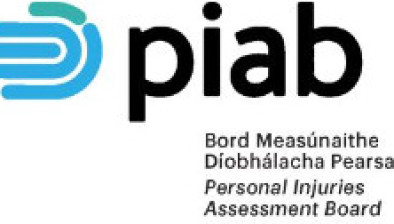High Court: €75,000 for man injured by bull at cattle mart

The High Court has awarded €75,000 in damages to a man who was injured by a bull at a cattle market. The man was an experienced farmer who had been asked to assist in driving cattle into the auction area when he was attacked by a startled cow.

About this case:
- Citation:[2022] IEHC 533
- Judgment:
- Court:High Court
- Judge:Mr Justice Cian Ferriter
Delivering judgment in the case, Mr Justice Cian Ferriter held that the plaintiff’s account of the accident was more reliable despite the defendant calling five witnesses who claimed that the plaintiff caused the incident. Further, it was held that the defendant was negligent in its operation of the system for driving animals into the sales ring and caused the bull to become spooked before it attacked the plaintiff.
Background
The plaintiff was a cattle farmer from Edenderry, Co Offaly. In August 2017, the plaintiff attended his local cattle mart and unloaded his cattle. At the time, there was only one employee dealing with cattle arriving in the holding pens.
The holding pens had a gate which led to a “chute” and a “runway”. At the time of sale, cattle were driven into the narrow chute and the gate would close behind them. The cattle would be checked and then driven into the sales ring.
Since the defendant only had one employee to help drive the cattle into the chute area, the employee asked the plaintiff to assist. The plaintiff agreed. As the animals were driven into the chute, some cattle got stuck. This caused a logjam, with the defendant’s employee choosing to drive the cattle back into the holding pen, where the plaintiff was still located.
The parties disagreed on what occurred after this. The plaintiff said he could not see that an animal had become blocked and that he continued to drive the cattle out of the pen. However, the animals stopped and suddenly a young bull attacked the plaintiff. The plaintiff said he hit the bull on the head with his stick to stop the attack. He was saved by another person attending the mart who diverted the bull, but not before suffering injuries.
The defendant claimed that the plaintiff had been the author of the accident by provoking the bull. Specifically, it was said that the plaintiff hit the bull on the head with a stick while driving the cattle. The defendant called several witnesses who made this claim although the plaintiff said he would never hit an animal in that manner and especially a young bull.
On the issue of liability, the plaintiff produced expert evidence that when cattle were frightened or nervous, they would seek to escape and run towards daylight. This could occur in a mart situation. Further, the expert opined that the mart was short-staffed and there should have been two or three staff available. It was not unusual for an animal to get stuck in a chute and, in such circumstances, the court heard that the appropriate action was to circle the animals back in the adjacent runway to re-enter the chute, rather than push them back into the holding pen.
High Court
Delivering judgment in the case, Mr Justice Ferriter held that the plaintiff’s account was more reliable than the evidence tendered by the defendant. In particular, the court held that the plaintiff was frank in his evidence and prepared to make appropriate concessions when he was unsure of facts. In contrast, the court found that the defendant’s employee was defensive and vague in his evidence.
Further, there were “materially unreliable aspects” of the evidence of other witnesses. One witness claimed he saw the plaintiff “beating the life” out of the bull with a big black stick, but the plaintiff’s stick was ash and no other witness claimed to see the plaintiff repeatedly strike the bull. Another witness was determined to have a diminished view due where he claimed to see the incident.
A third witness claimed that the young bull had recently been dehorned, which caused him to act aggressively due to a sensitive skull. However, the plaintiff’s brother gave evidence that the bull had been dehorned months prior and would not have a sore head. Finally, another witness who gave evidence on behalf of the defendant had previously written to the plaintiff’s solicitors stating that he had no knowledge or recollection of the accident. Accordingly, this evidence was unreliable.
In accepting the plaintiff’s version of events, the court held that the cattle had been driven back into the holding pen by the defendant’s employer. It was further accepted that a mart normally takes over responsibility for cattle once they arrived in the holding pen. Based on the plaintiff’s expert evidence and the cross-examination of the employee, it was held that it would not be safe to drive animals back into the pen when another person was seeking to drive the animals out.
As such, the court was satisfied that the defendant was negligent in driving the cattle back into the pen of the logjam occurred. The court was not satisfied that there was any contributory negligence by the plaintiff, as there was no prospect of the plaintiff escaping the pen to avoid the bull.
On the issue of damages, the court noted that the plaintiff spent ten days in hospital, suffering five broken ribs and severe soft tissue damage to his back. He was significantly impaired from doing heavy work on the farm and required help. The plaintiff could not undergo an arthroscopy to assess the damage in his shoulder because he had a heart condition that rendered surgery under anaesthetic risky. The plaintiff was still symptomatic three years after the accident and also presented with PTSD symptoms.
Conclusion
Applying the Book of Quantum, the court awarded €45,000 for pain and suffering to date and €30,000 for pain and suffering into the future. As such, the plaintiff received a total sum of €75,000.
Fergus Malone v. Edenderry Livestock Mart Limited [2022] IEHC 533











